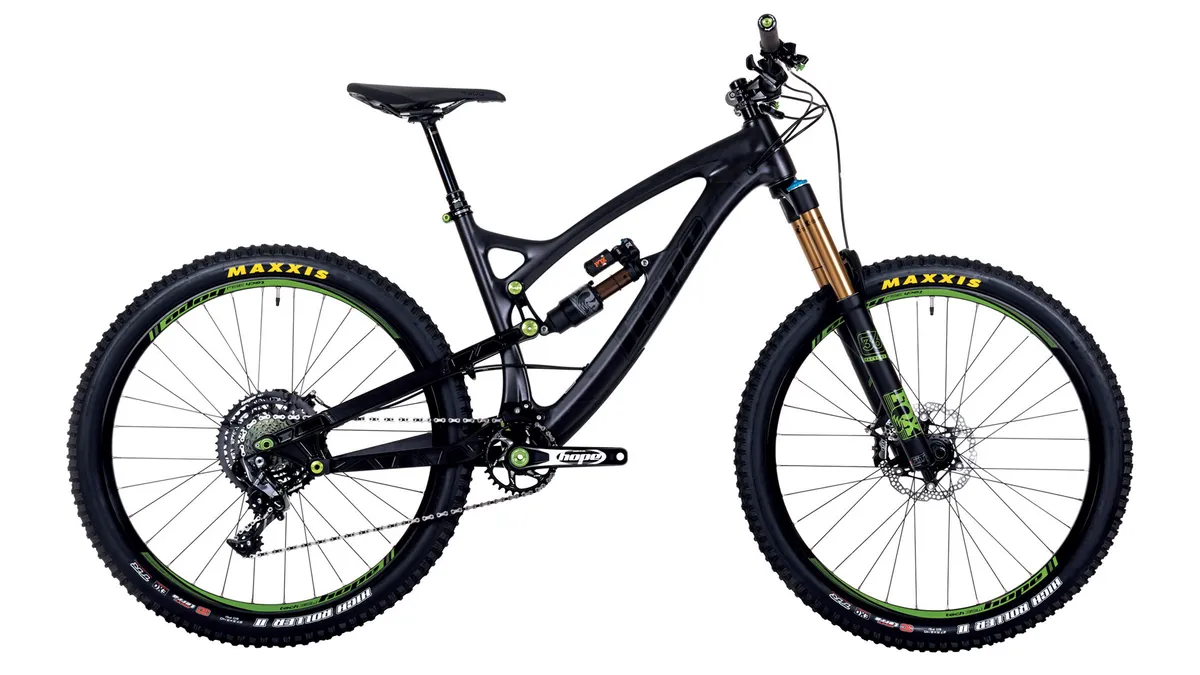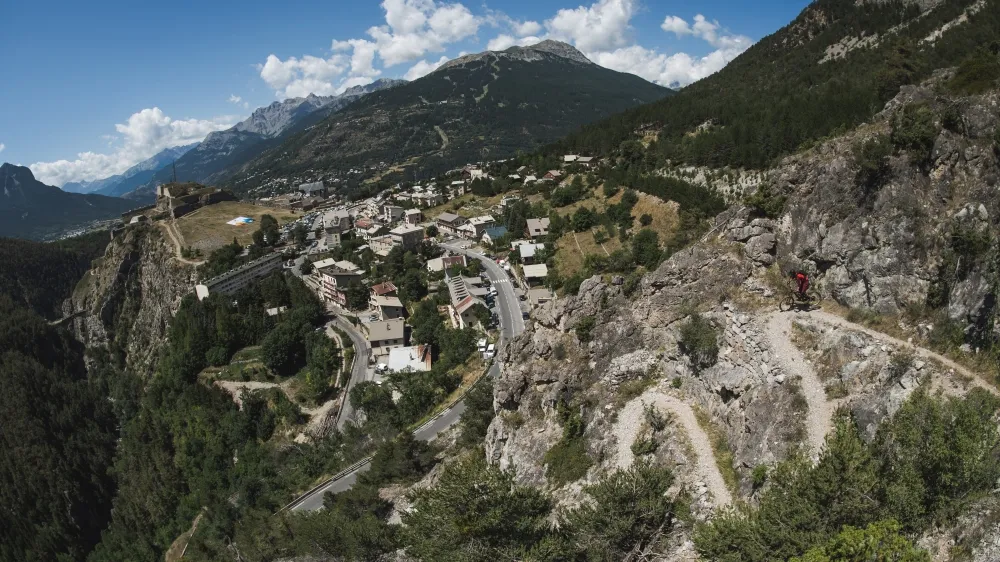Fans of Hope Technology, the Barnoldswick born-and-bred components manufacturer, have long been anticipating the release of the bike that the company has tantalised and teased for months, and it's finally ready to go.
BikeRadar was among the first to take the bike for an Alpine ride and let you know if the wait has been worth it.
First things first. The HB.160 (AKA the HB211, the name of the project behind the development of the bike) doesn't represent a new direction for the established component manufacturer or a move to bike-manufacturing world domination.
Rather, the bike is the culmination of the vision of Hope founders Ian Weatherill and the sadly departed Simon Sharp, who wanted to realise their dream of creating a full bike.
The Hope HB.160 is that bike; a 160mm-travel 27.5 all-mountain/trail bike with carbon frame and as much colourful Hope componentry adorning the stealthy carbon-black frame as is possible to squeeze on.
The HB.160 will be available in strictly limited numbers via a select few retailers from September 2017.
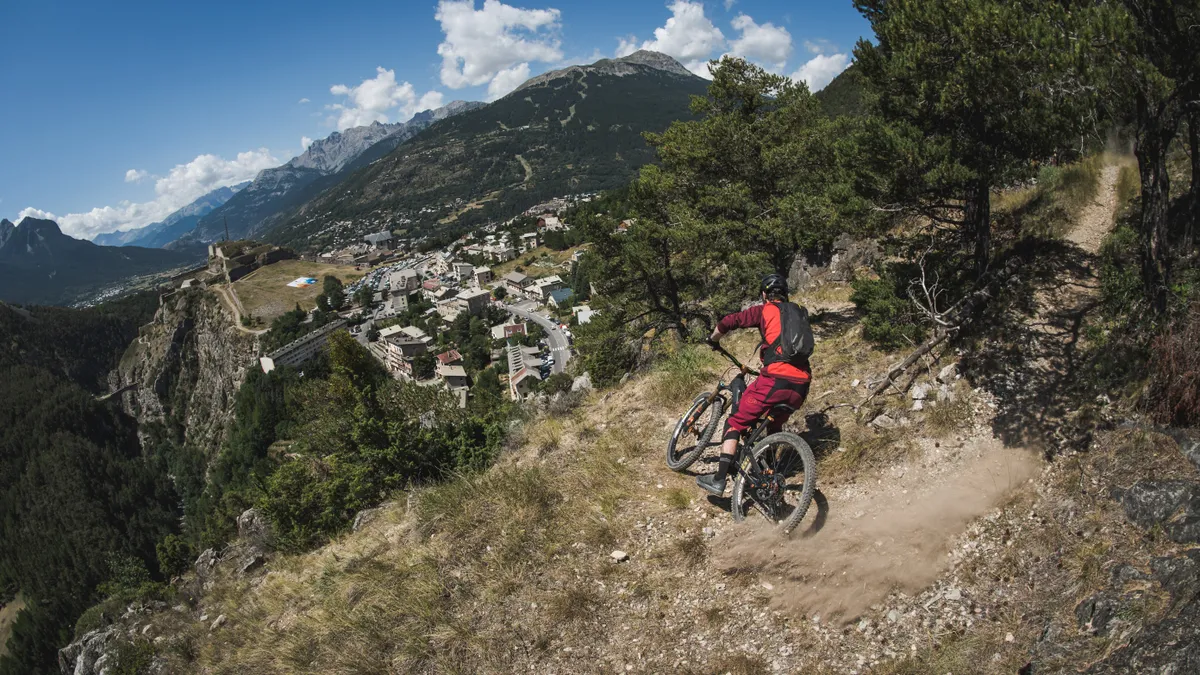
Hope HB.160 background
The HB.160 has been in development in one form or another for well over 10 years, and the idea started back in 2005 looking very different to the end result.
Originally, Weatherill and Sharp planned to develop a welded steel frame, but that morphed into carbon over time. Keen to capitalise on the extensive Formula 1 and aeronautical engineering expertise based in the UK, and with Hope's experience in CNC machining, the company felt that the project offered an opportunity to demonstrate that carbon manufacturing could be done in the UK, and done well.
The HB.160 certainly keeps things fun when it counts
The additional benefit of having the full manufacturing process located in the brand's home of Barnoldswick is that, coupled with owning the tools to develop and adapt its carbon moulds, Hope can tweak elements of the bike in response to feedback. Indeed, since BikeRadar attended the press launch in Briançon, France, Hope has altered the seat tube height on various sizes based on feedback from launch attendees.
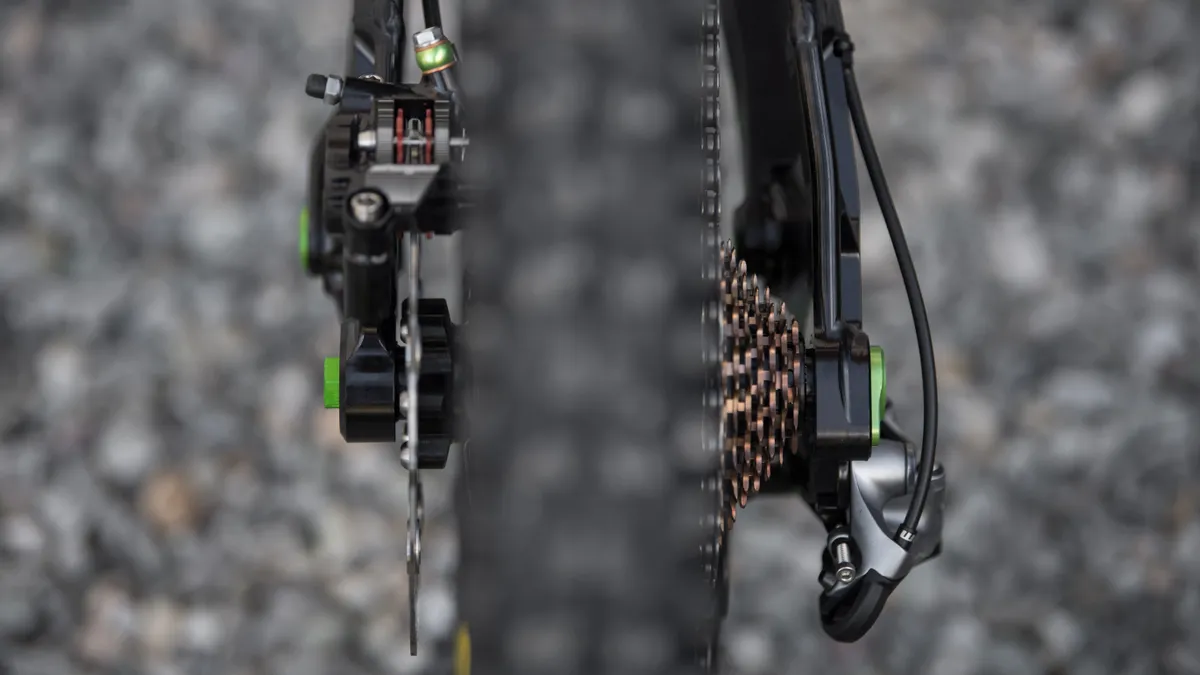
The bike also originally started life as a downhill bike, but has also evolved over time into a capable trail/all-mountain bike/enduro.
Having a single designer work on the bike in its final incarnation, and being able to develop the bike as a whole without the constraints of adhering to particular standards, has meant that Hope has created what it regards as 'the perfect bike'.
This has lead to some unusual elements, such as creating a 130mm dropout rear end with rotors and calipers close to the spokes, with a 17mm thru-axle and 25mm location spacers, designed to maximise stiffness.
Suspension is based around a Horst Link four-bar linkage system, and can be used with either an air or coil shock.

Lively, manoeuvrable and comfortable
“We wanted a lively, manoeuvrable and comfortable bike making the ride fun and able to go around tight switchbacks rather than a planted and straight-line warrior”, say the guys at Hope.
A glance at the geometry chart helps to underline this. While its 65.5-degree head angle, 435mm chainstays and 340mm bottom bracket height are akin to other bikes with a similar amount of travel, the reach numbers buck the trend somewhat, measuring in quite a bit shorter then we’ve become accustomed to.
I [Rob] opted to ride the medium bike while out in Briançon, which boasts a reach that measures in at a shade over 416mm and while it did feel shorter than what I am used to, it didn’t take me too long to adapt to it — jumping up to the large would have given me a reach number that I was more used to, but the taller 485mm seat tube meant I’d have struggled getting the saddle low enough when riding steep terrain.
Since the camp, Hope has actually made some amendments to the sizing of the bikes by reducing seat tube lengths. With the latest change (10mm reduction in the seat tube on the large) I would in fact be able to ride the large frame.

Bike park shredding and switchback slaying
My first morning aboard the HB.160 was spent on bike park style trails, which were littered with a good mix of berms and jumps, with the occasional natural, steep rutted chute thrown in for good measure.
Early on at least, the biggest adjustment I needed to make was getting used to the loose, roughed up dusty trails where traction felt hard to come by. It was here that the wide rim/tyre combo really made sense, letting me drop enough pressure to keep the tyres gripping without sacrificing sidewall support.
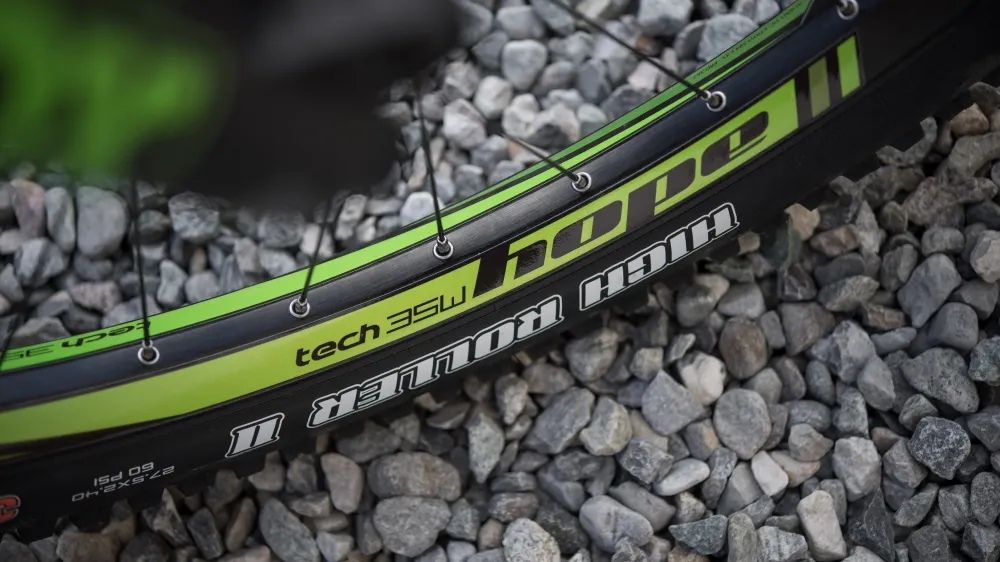
Just as Hope promises, the HB.160 certainly keeps things fun when it counts. I had no issues throwing the bike around off jumps or loading it hard into turns where it’s keen to carve a line at speed.
Out back, there’s a nice amount of support and progression in the suspension that gives you the confidence to really get rowdy from the get go, without ever feeling harsh or bucking your feet from the pedals when the trail beneath you becomes really chewed up.
While it’s not got the most supple initial stroke early on, get the bike sat into its travel and it really does feel impressively sure-footed when it counts, without dulling any of that much sought after liveliness.
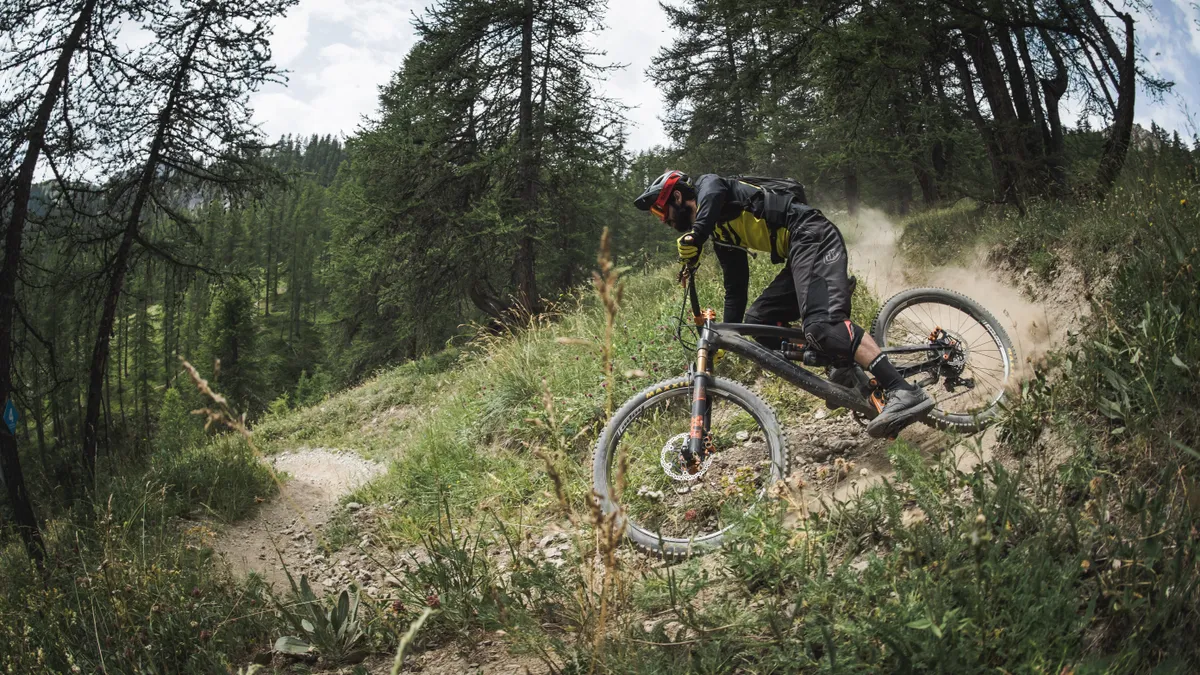
As I ventured a little further and the trails became more natural and less predictable, there were certainly a few times when the pace picked up and I’d have preferred the bike to be a touch longer. It’s not that the HB.160 became particularly jittery or nervous at high-speed, but more that it felt like there was more potential just waiting to be tapped into. Still, as Hope says, this isn’t what the bike is about, and that began to make a lot more sense on day two.
As I snaked down the mountain, tackling switchback after switchback, the emphasis on creating a nimble, agile bike for dealing with these low-speed, super tight turns made more sense.
The HB.160’s ability to slice its way through these properly tight, highly technical turns was seriously impressive and made riding them far more fun and less awkward than I’ve experienced in the past on longer machines — and clearly highlighted where the bike will excel.
Of course, the relatively low bottom bracket and its healthy 15mm of drop helps, but the compact wheelbase does make getting around that bit easier. These are the turns and the terrain that inspired the geometry, after all.
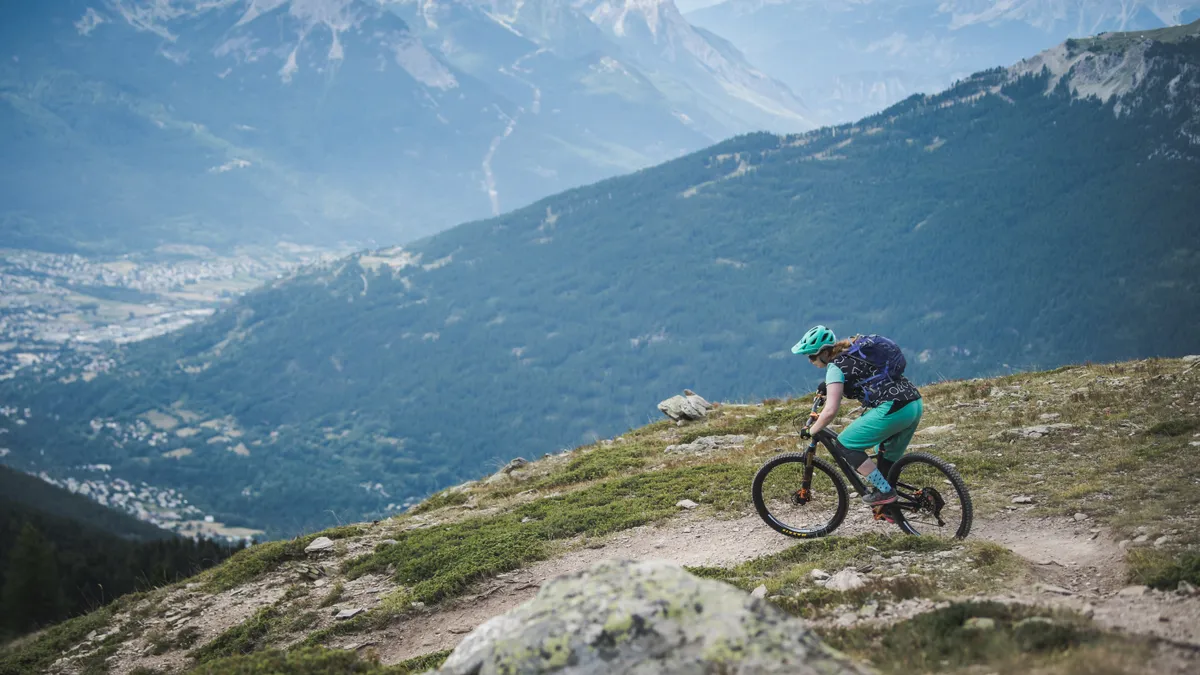
Aside from any question marks around sizing, the only niggle I really had was with the chain noise when tackling rough terrain. The clatter wasn’t particularly bad, but it was enough that you’d notice it regularly. Hope assures us this is something it is working on rectifying though.
Overall then, while it’s hard to get the complete measure of a bike like the HB.160 without riding it on familiar trails, a few things do stand out.
Yes, it’s well suited to the switchback covered mountain trails that surround its spiritual home of Briançon, but it also boasts well-balanced suspension with support and progression when it counts, some decent angles and a beautifully made frame.
There’s also the solid, well-considered spec to consider, some of the best dampers on the market plus the superb customer service and backup that Hope is renowned for. As for the sizing, I’ll let you know more when I get the bike back to ride on my local test trails.
Hope HB.160 early verdict
The HB.160 is a riot to ride and delivers on Hope’s promises of agility and fun. The only real question mark surrounds the sizing, though it seems like Hope is already working on rectifying that.
Hope HB.160 spec overview
- Frame: HB.160 carbon
- Shock: Factory Flat X2 2 position lever
- Fork: Fox Factory 36 Float RC2 160mm boost
- Headset: Hope 1.5" - 1 - 1/8"
- Stem: Hope AM 35mm
- Bar: Hope carbon 780mm
- Grips: Hope Lock On
- Brakes: Hope Tech 3 E4 180mm, 160mm rear on small
- Shifter lever: SRAM XX1, 11-speed
- Derailleur: SRAM XX1, 11-speed
- Cranks: Hope fitted with 30t spider less ring
- Cassette: Hope 10-44t, 11-speed
- Pedals: Hope F20
- Wheelset: 27.5 35w rims, Pro4 HB/110 Boost
- Tyres: Maxxis High Roller II 3C EXO 2.4 (tubeless)
- Saddle: SDG Duster MTB Ti alloy rails
- Seatpost: RockShox Reverb 125mm small / 150mm medium, large, XL
- Bottom bracket: Hope HB 30mm

Hope HB.160 prices and availability
While not originally intended as anything more than a concept bike, the interest in the HB211 project has been sufficient to convince Hope that people want to buy this bike.
Don't expect to see it everywhere though. The HB.160 will be available in strictly limited numbers and will only sell through a very select few bike shops, chosen by Hope.
The HB.160 will be available from September 2017 and will retail for £7,500.


